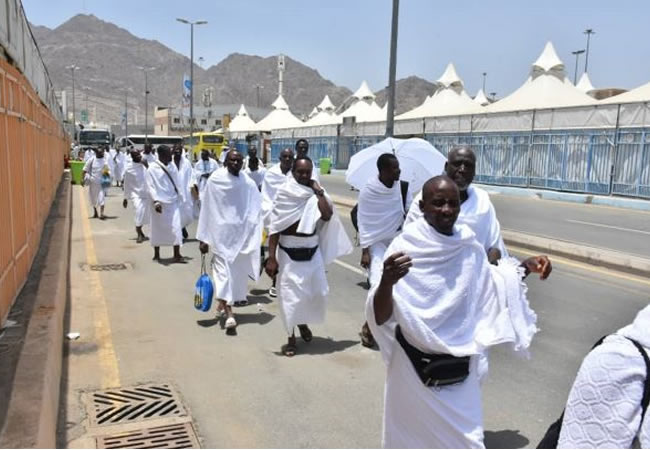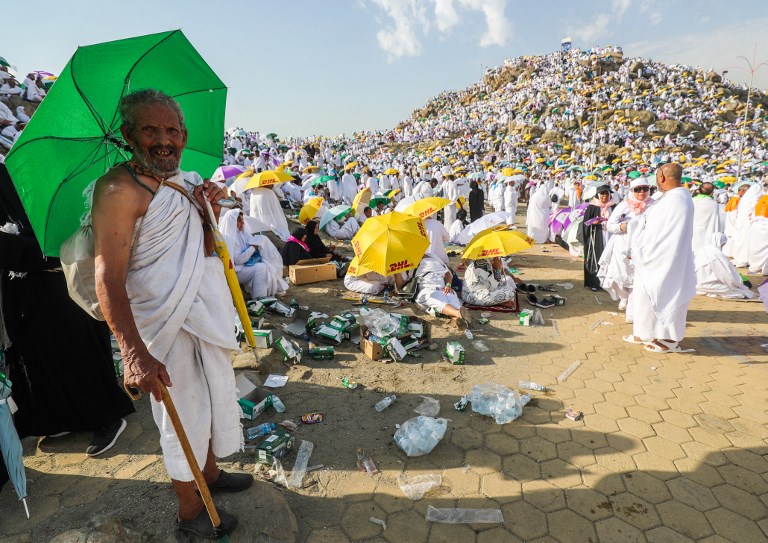Hajj is the annual Islamic pilgrimage to Mecca, Saudi Arabia, and it stands as a mandatory religious duty for Muslims.
This pilgrimage must be carried out at least once in the lifetime of every adult Muslim who is physically and financially able to undertake the journey.
As one of the five pillars of Islam, Hajj holds immense spiritual and religious significance, forming a core component of the Muslim faith and practice.
The religious significance of Hajj lies in its commemoration of the trials and sacrifices of the Prophet Ibrahim (Abraham), his wife Hajar (Hagar), and their son Ismail (Ishmael).
The rituals performed during Hajj symbolise submission to the will of Allah, reflecting Ibrahim’s obedience and unwavering faith.
Each step of the pilgrimage is imbued with deep spiritual meaning, reminding Muslims of their connection to this sacred history and their commitment to faith.
PUNCH Online in this report gives a three-frame guide on Hajj – before departure, during Hajj and after Hajj.
Here’s a step-by-step guide to performing Hajj:
A. Before Departure
Intention (Niyyah):
Make the sincere intention to perform Hajj for the sake of Allah alone.
Educate yourself on the rites and rituals of Hajj.
Financial and Legal Preparations:
Ensure you have the necessary funds to perform Hajj and support your family during your absence.
Obtain the necessary travel documents (passport, visa, vaccinations).
Physical and Spiritual Preparation:
Engage in physical activities to prepare your body for the demands of Hajj.
Increase your acts of worship, seeking forgiveness, and making supplications.

B. During Hajj
1. Ihram
Location: At a Miqat (designated station for assuming Ihram).
Rituals:
Perform Ghusl (ritual purification).
Wear Ihram clothing: two white seamless sheets/cloths for men, and regular modest clothing for women.
Declare your intention (Talbiyah): “Labbayka Allahumma Hajj.”
2. Tawaf
Location: Masjid al-Haram in Mecca.
Rituals:
Perform Tawaf by circumambulating the Kaaba seven times in a counter-clockwise direction.
Touch or point to the Black Stone (Hajar al-Aswad) if possible.
3. Sa’i
Location: Between the hills of Safa and Marwah.
Rituals:
Walk seven times between Safa and Marwah.
Reflect on the story of Hagar’s search for water.
4. Travel to Mina
Date: 8th of Dhul-Hijjah.
Rituals:
Stay in Mina and perform the five daily prayers.

Arafat is the site where Muslims believe the Prophet Mohammed gave his last sermon about 14 centuries ago after leading his followers on the pilgrimage. / AFP PHOTO / AHMAD AL-RUBAYE
5. Day of Arafat
Date: 9th of Dhul-Hijjah.
Location: Plain of Arafat.
Rituals:
Stand in prayer and supplication, seeking forgiveness and making du’as (prayers).
Listen to the sermon at Masjid Namirah.
6. Muzdalifah
Night of 9th Dhul-Hijjah: Travel to Muzdalifah after sunset.
Rituals:
Collect pebbles for the Rami (stoning) ritual.
Perform Maghrib and Isha prayers, rest, and engage in worship.
7. Rami al-Jamarat
Date: 10th of Dhul-Hijjah (Eid al-Adha).
Location: Mina.
Rituals:
Stone the largest pillar (Jamrat al-Aqaba) with seven pebbles.
Sacrifice an animal (Udhiya/Qurbani).
8. Halq/Taqsir
Rituals:
Shave (Halq) or trim (Taqsir) your hair.
Men usually shave their heads, while women cut a small portion of their hair.
9. Tawaf al-Ifadah
Location: Masjid al-Haram in Mecca.
Rituals:
Perform Tawaf al-Ifadah, another seven circumambulations of the Kaaba.
Perform Sa’i again between Safa and Marwah.
10. Return to Mina
Dates: 11th-13th of Dhul-Hijjah.
Rituals:
Stay in Mina and perform Rami by stoning the three pillars (Jamrat al-Aqaba, Jamrat al-Wusta, Jamrat al-Sughra) each day with seven pebbles each.
11. Tawaf al-Wada
Location: Masjid al-Haram in Mecca.
Rituals:
Perform the farewell Tawaf (Tawaf al-Wada) as your final act before leaving Mecca.
C. After Hajj
Reflect on your Hajj experience.
Continue to live by the principles and lessons learned during Hajj.
Share your experience and knowledge with others.
Performing Hajj is a deeply personal and transformative journey. Each step is imbued with spiritual significance, and pilgrims are encouraged to perform each rite with sincerity, mindfulness, and devotion.
The pilgrimage concludes with the Tawaf al-Wada, the farewell circling of the Kaaba.
Hajj is performed annually from the 8th to the 12th (or 13th) of Dhul-Hijjah, the last month of the Islamic lunar calendar.
Meanwhile, Sultan of Sokoto, Sa’ad Abubakar, on Friday declared Sunday, June 16, as Eid-el-Kabir day. also known as Eid-el-Adha after affirming that Friday is the first day of Dhul Hijjah.
This timing is strictly adhered to, as it coincides with significant Islamic events and rituals. The specific days and the sequence of rituals are crucial to the proper performance of Hajj, ensuring that all pilgrims are unified in their worship and actions during this sacred time.

Historically, the rites of Hajj have their origins in the actions of Ibrahim, Hajar, and Ismail, and were later re-established by the Prophet Muhammad, according to Islamqa.
The pilgrimage has been performed since before the advent of Islam in the 7th century, but it was reformed and codified by the Prophet Muhammad to its current form. This historical continuity links modern-day pilgrims with their ancestors, preserving the ancient traditions and spiritual lessons of the past.





